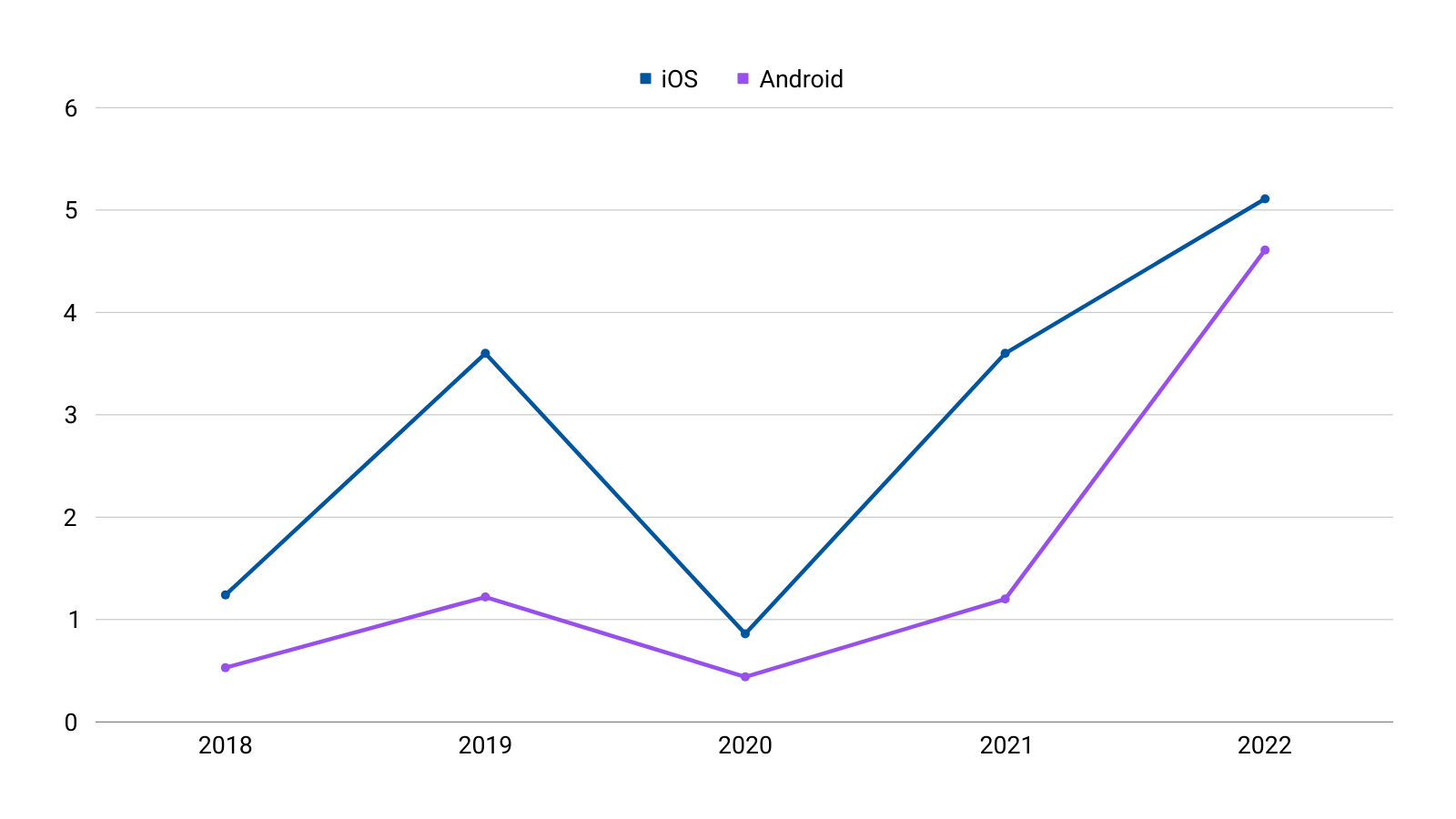Table of Contents
introduction
Today the concept of 'user acquisition' emerges as a cornerstone for the success of any mobile app. User acquisition, in its essence, is the process of attracting and bringing new users to a mobile application. This process is not just about increasing the number of downloads; it's a critical metric reflecting an app's growth, market reach, and potential for long-term viability in an increasingly competitive digital ecosystem.
However, attracting users is only part of the equation. The true power and potential of user acquisition lie in the meticulous analysis of user behavior patterns. Understanding how users interact with an app, what motivates their engagement, and what factors contribute to their continued usage or eventual abandonment is vital. This analytical approach transforms raw data into actionable insights, enabling app developers and marketers to tailor their strategies to meet the actual needs and preferences of their user base.
The importance of analyzing these behavior patterns cannot be overstated. It goes beyond mere numbers, offering a window into the user experience – an opportunity to see the app through the users' eyes. By analyzing behavior patterns, businesses can optimize the user journey, enhance user satisfaction, and ultimately, turn new users into loyal customers. This comprehensive understanding is crucial in an era where user retention and engagement are as important as acquisition.
Global Mobile Ad SpendData.ai

Understanding User Acquisition:
User acquisition, in the realm of mobile apps, is defined as the process of gaining new users for an app. This includes strategies and activities aimed at increasing the app's user base, be it through marketing campaigns, app store optimization, or word-of-mouth referrals. The significance of user acquisition in app growth is immense. It's a direct indicator of an app's market presence and its ability to attract a significant audience. A robust user acquisition strategy not only boosts the number of app downloads but also lays the foundation for sustained growth, revenue generation, and brand building.
However, the landscape of user acquisition is evolving. It's no longer just about getting users to download an app; it's increasingly about understanding and catering to the users' needs and preferences. This is where the relationship between user behavior analysis and user acquisition becomes evident. Analyzing user behavior – understanding how users interact with an app, what features they use the most, where they face difficulties, and what keeps them engaged – is crucial in refining user acquisition strategies.
By delving into user behavior, app developers and marketers can identify what attracts users to their app, what aspects resonate with them, and what prompts them to keep using the app. This knowledge enables the creation of more targeted and effective acquisition campaigns. It also helps in optimizing the app itself, making it more appealing and user-friendly. In essence, user behavior analysis provides a roadmap to not only acquire users but to acquire the right kind of users – those who are likely to become active, engaged, and loyal users of the app.
In this way, user acquisition and user behavior analysis are intrinsically linked. One drives the quantity of users, while the other enhances the quality of those acquisitions, ensuring that growth in numbers translates to growth in value.
Measuring User Acquisition:
Measuring user acquisition is a fundamental aspect of understanding an app's performance and growth. It involves tracking various metrics and employing methods that collectively paint a picture of how effectively an app is attracting new users. These measurements not only quantify the success of user acquisition strategies but also provide insights for future optimization.
Download Metrics: One of the most straightforward metrics for measuring user acquisition is the number of app downloads. This metric reflects the basic level of user interest and reach of the app. Tracking downloads over time can reveal trends, peak periods, and the impact of marketing efforts.
Install Rate: The install rate goes a step further by examining the number of installs in relation to the number of times the app was viewed or clicked on in the app store. This metric helps in understanding how compelling the app is to potential users at first glance.
Cost Per Acquisition (CPA): CPA is a crucial financial metric that calculates the cost involved in acquiring a new user. It’s derived by dividing the total cost of a campaign by the number of users acquired. Monitoring CPA helps in evaluating the financial efficiency of acquisition strategies.
User Retention Rate: While slightly indirect, the retention rate is an important metric for measuring user acquisition's effectiveness. It assesses the percentage of users who continue to use the app after a certain period. High retention rates often correlate with successful user acquisition strategies that attract the right audience.
Lifetime Value (LTV): LTV estimates the total revenue a user will generate throughout their time using the app. This metric is essential for understanding the long-term value of user acquisition efforts and ensuring that the cost of acquiring users doesn’t surpass the revenue they generate. Find more about LTV here
Conversion Rates: Conversion rates in the context of user acquisition refer to the percentage of users who take a desired action after downloading the app, such as making a purchase, registering, or subscribing. This metric is vital for apps that rely on actions beyond the initial download.
Referral Sources: Analyzing where users are coming from – whether it’s search engines, social media platforms, or referral programs – is crucial. This helps in identifying the most effective channels for user acquisition and allocating resources accordingly.
These metrics and methods, when used collectively, provide a comprehensive view of an app’s user acquisition performance. They enable app developers and marketers to not just track how many users are acquired, but also to understand the quality and value of these users, leading to more informed and effective strategies in the future.
Related Article: Crafting the Digital Odyssey: The Tapestry of Mobile App Metrics
Average mobile app user acquisition cost (per install, $) by Business of Apps

Tracking Acquisition and Customer Acquisition:
In the digital age, tracking user and customer acquisition has become more sophisticated, relying on a mix of techniques and tools designed to provide detailed insights into how users discover and interact with mobile apps. Understanding these pathways is essential for refining acquisition strategies and maximizing app growth.
Analytics Platforms: Analytics tools are the backbone of tracking user acquisition. They provide data on user demographics, behavior, source of app discovery, and conversion rates. Platforms like Google Analytics and Mixpanel offer in-depth insights into user behavior and traffic sources, helping to track the effectiveness of acquisition efforts.
Attribution Tools: Attribution tools are specialized in tracing the journey of a user from the first interaction with an ad or a link to the eventual app download and subsequent actions. These tools, such as AppsFlyer or Branch, help in identifying which marketing channels and campaigns are most effective in driving user acquisition.
Social Media and Ad Campaign Analytics: For apps leveraging social media and digital ads for acquisition, the built-in analytics of these platforms provide valuable data. They track metrics like click-through rates, impressions, and engagement levels, offering insights into how these channels contribute to user acquisition.
CRM Systems: Customer Relationship Management (CRM) systems help in tracking and managing interactions with potential and existing customers. They are crucial for understanding the customer journey and enhancing engagement strategies.
UserX's Role in Tracking Acquisition: UserX can play a pivotal role in this ecosystem. By offering session recordings and touch heatmaps, UserX allows app developers and marketers to see exactly how users interact with the app. This visual data can reveal user pain points, areas of high engagement, and paths taken within the app, offering direct insights into user behavior post-acquisition.
Conversion Funnels with UserX: Furthermore, UserX’s conversion funnel analysis is instrumental in understanding at which stages users are most engaged or where they drop off. This helps in pinpointing the strengths and weaknesses in the acquisition and onboarding processes, allowing for targeted improvements.
Related Article: Transforming User Experience with Mobile App Funnel Analytics
User Behavior Analysis with UserX: Analyzing user behavior through UserX can lead to more effective customer acquisition strategies. By understanding the user's journey within the app, businesses can tailor their marketing efforts to attract similar profiles, thereby increasing the likelihood of acquiring valuable users who are more likely to engage and convert.
In summary, the combination of analytics platforms, attribution tools, ad campaign data, and CRM systems, complemented by the in-depth user insights provided by UserX, forms a comprehensive approach to tracking user and customer acquisition. This multi-faceted approach not only tracks the quantity of new users but also sheds light on the quality of these acquisitions, guiding strategies for sustainable app growth.




